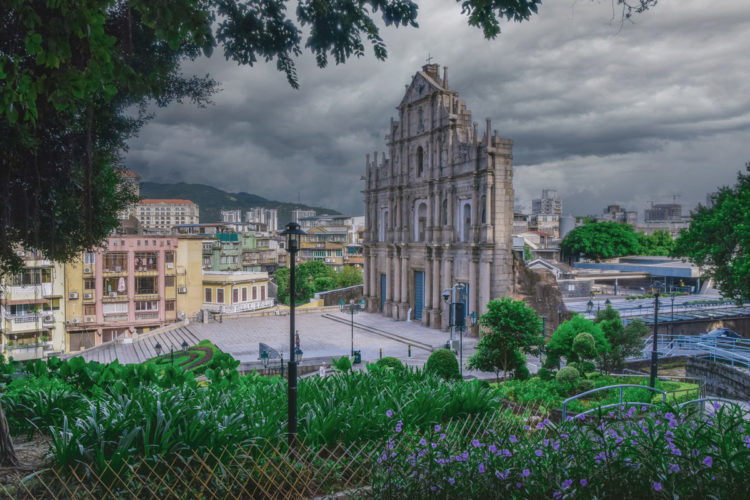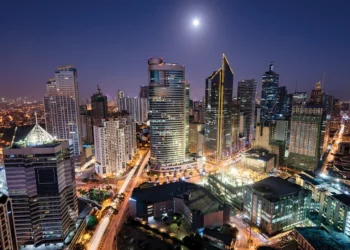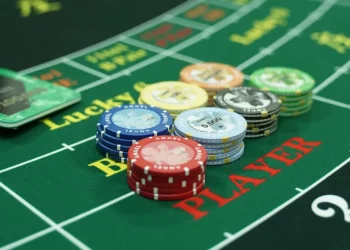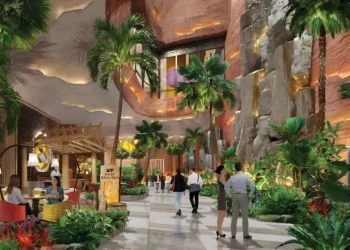COVID-19 swept into Macau once again on 18 June and the Macau government quickly rolled out strict control measures – dealing small-and medium-sized enterprises (SMEs) yet another blow. In view of the pandemic fluctuations, what is the future of SMEs?
The Macao SAR Government announced the suspension of dine-in service in restaurants and the closure of gyms, beauty salons and other establishments on 23 June. However, the number of confirmed cases did not decline following the implementation of this measure.
 On 11 July, the government abruptly announced that all commercial and industrial businesses would be closed for a week, with the entire city subject to what it has called “standstill” status.
On 11 July, the government abruptly announced that all commercial and industrial businesses would be closed for a week, with the entire city subject to what it has called “standstill” status.
While the suspension of these businesses was initially slated to last for only one week, it was later extended for an additional five days and, while the lockdown itself has been eased, it is still not known when the ban on dine-in service in restaurants will end or when other routines will return to normal. This means that if Macau cannot achieve “zero-COVID” as expected by the government, there is no end in sight for many of these businesses.
 Likewise, while the government announced on 19 June that financial relief measures tailor-made for SMEs would be rolled out as part of a financial aid package worth MOP$10 billion (US$1.24 billion), there is no timetable for when these measures will be put forward.
Likewise, while the government announced on 19 June that financial relief measures tailor-made for SMEs would be rolled out as part of a financial aid package worth MOP$10 billion (US$1.24 billion), there is no timetable for when these measures will be put forward.
In this despairing business environment, a restaurant owner told IAG that what SMEs really want is not “financial aid” but a concrete future.
The owner remarked, “The financial aid is only enough to settle staff wages but it cannot cover the total expenditures of a restaurant for a month. If there is another outbreak two months after the conclusion of the current outbreak, does it mean SMEs have to suspend operations again?”

In the wake of the ban on dine-in service, the owner said business turnover dropped nearly 70%, and the restaurant recorded a significant loss because expenditures like staff wages and rents remain the same.
“SMEs need to see what lies ahead in the future – a blueprint. Perhaps the community needs to consider living with COVID,” the owner said.
 In the early stage of this outbreak, on 22 June, an owner of a souvenir store in the vicinity of the Ruins of St Paul’s told IAG that the outbreak meant “an economic zero” for Macau. A month later, the outbreak still persists. Before the implementation of the lockdown measure, IAG re-visited the Ruins of St Paul’s but the situation was different compared with the business environment in June. About 70% of souvenir stores in the area were now closed, including the shop IAG had previously visited.
In the early stage of this outbreak, on 22 June, an owner of a souvenir store in the vicinity of the Ruins of St Paul’s told IAG that the outbreak meant “an economic zero” for Macau. A month later, the outbreak still persists. Before the implementation of the lockdown measure, IAG re-visited the Ruins of St Paul’s but the situation was different compared with the business environment in June. About 70% of souvenir stores in the area were now closed, including the shop IAG had previously visited.
The President of the Industry and Commerce Federation of Macau Central and Southern District, Lei Cheok Kuan, said about one-third of shops in the district of the Ruins of St Paul’s had been shuttered.
 “Some of them did not wind down, but they just suspended their operation because of no income,” he said.
“Some of them did not wind down, but they just suspended their operation because of no income,” he said.
Compared with two years ago, everyone from large corporations to SMEs has started running out of liquidity, Lei said.
“In 2020, SMEs thought the pandemic would be over soon; in 2021, SMEs started to feel fatigue but tried to get through it. But many businesses can’t keep going anymore this year,” he said. “Some merchants have even used their own financial assets to support their businesses in the past two years and more, but many of them have given up this year.
“Many merchants cannot keep going anymore. There is still no news now [as of late July] about the details of the MOP$10 billion financial support package pledged by the government. This outbreak has lasted for more than a month, and it’s difficult for businesses to stay afloat with no revenue.”
Lei said some measures had to be adjusted as this was not the first time Macau’s businesses have had to endure the effects of a COVID-19 outbreak.
“The priority now for the Macau government is to lift the travel restrictions with Mainland China, and to discuss new measures together with the mainland authorities to replace the current quarantine arrangement when there is a new case,” he said.

























